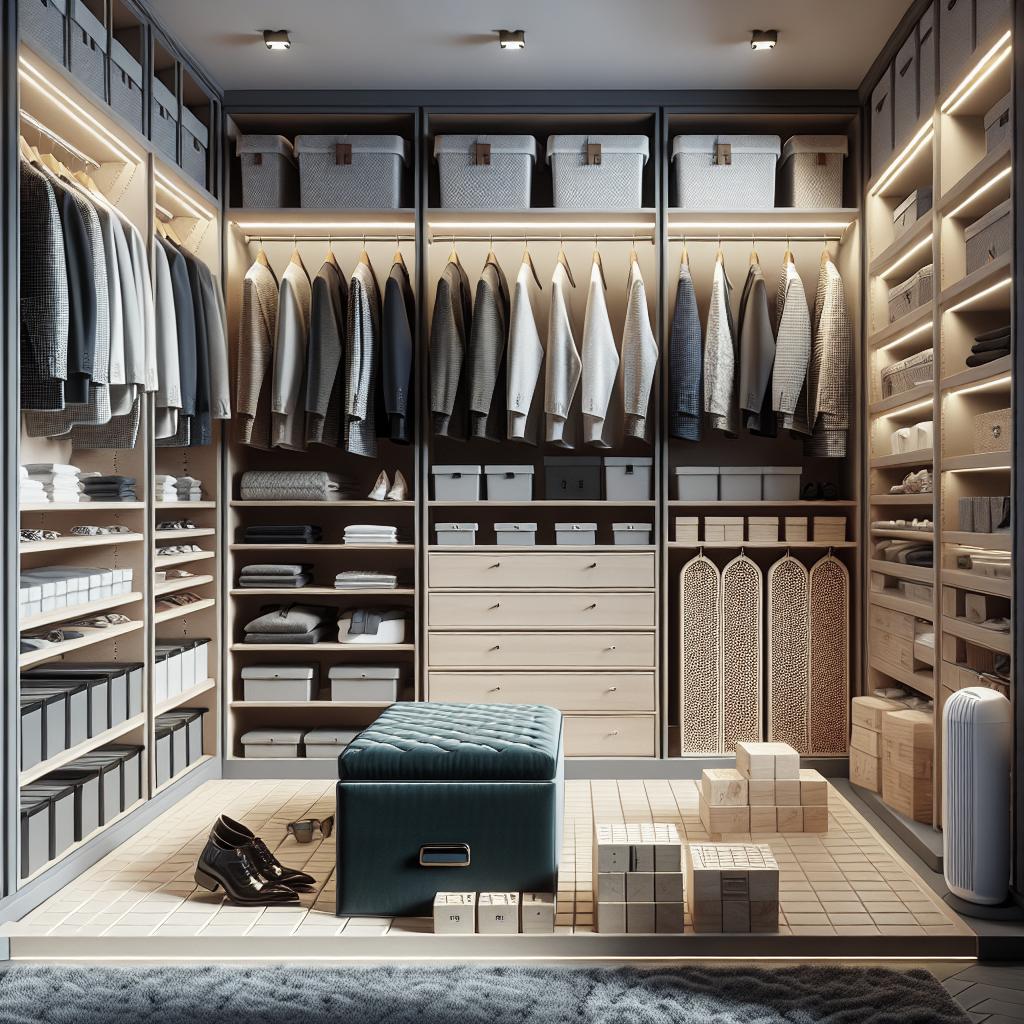Best Practices for Storing Luxury Clothing and Accessories
Investing in luxury clothing and accessories is a rewarding endeavor that blends style with longevity. Safeguarding your high-end garments and accessories not only preserves their beauty but also ensures their value over time. This guide explores the best practices for managing your luxury collection, from the initial acquisition to maintaining their pristine condition. You’ll uncover tips for safe storage, wearing precautions, and effective preservation strategies, protecting your investment for years to come. Explore how to treat your valuables with the care they deserve.
Navigating the Acquisition Process
The journey into collecting luxury clothing and accessories begins with informed purchasing decisions. Researching brands, materials, and resale value is crucial in building a collection that maintains its worth. Understanding market trends and brand reputation allows collectors to make savvy investments, choosing pieces with timeless appeal and enduring quality.
Once informed, consider working with reputable sellers and authorized boutiques. Building relationships with trusted sources minimizes the risk of acquiring counterfeit items and ensures authenticity. Engaging with communities of collectors online or in person can also provide insights and advice for curating a well-rounded collection.
Additionally, focusing on limited editions or collaborations can enhance value. Such pieces are more likely to appreciate over time, making them coveted among collectors. By carefully navigating the acquisition process, collectors set the foundation for a treasured luxury wardrobe.
Storing Your Collection Safely
Proper storage is crucial to preserving the condition of luxury clothing and accessories. Begin by selecting a cool, dry, and dark environment to protect against fading and mildew. Humidity and temperature fluctuations can damage delicate fabrics and leather, so climate control is an essential consideration.
Utilize padded hangers or garment bags for hanging items like blazers and dresses, preventing fabric stress and maintaining shape. Folding items such as knitwear with acid-free tissue paper minimizes creases and deterioration. For accessories, dust bags and boxes offer protection from dust and light exposure, critical for maintaining the surface condition.
When storing shoes, employ shoe trees to maintain their form, and use high-quality polish to protect leather and suede. Keeping desiccant packs in storage spaces helps absorb excess moisture, preserving the material integrity of all items.
Precautions for Wearing Collectibles
When wearing luxury items, certain precautions will help maintain their condition. Pay attention to environmental factors that might harm your clothing. For example, avoid wearing them during inclement weather or in environments where they might be easily stained or damaged.
Minimize contact with perfumes, lotions, and oils, which can tarnish metals and stain fabrics. Apply such products well before dressing to allow them to dissipate. Additionally, keeping items away from direct sunlight when not worn helps prevent fading over time.
For jewelry, ensure pieces are appropriately fastened and secure. Being mindful of how items are layered or combined when worn can prevent scratches or tangles, preserving their beauty and craftsmanship.
Preserving the Beauty of Your Collectibles
Caring for luxury clothing and accessories involves routine cleaning and maintenance. Always follow the care instructions specified by the manufacturer, as improper cleaning methods can cause irreversible damage. For intricate pieces, professional cleaning services specializing in luxury wear can preserve fabric quality and design details.
For leather goods, regular conditioning prevents drying and cracking, while preservation sprays can offer additional protection against stains and watermarks. Rotate items in your collection to prevent overuse and wear, giving each piece time to recover between uses.
Customizing care regimens for different materials enhances longevity. For instance, silk requires gentle handling, while cashmere benefits from periodic de-pilling to maintain its softness. By preserving each item mindfully, you can enjoy them in their best condition for years to come.
Protecting Your Investment
Assuring your luxury collection provides financial security against potential loss. Many insurance companies offer policies tailored to high-value items, covering theft, loss, or damage. Document your collection by photographing each item, keeping receipts, and noting any unique identifiers or characteristics.
In addition, regular appraisals of your collection help maintain appropriate insurance coverage and track the fluctuating market value of your pieces. As market trends shift, staying informed ensures your policy reflects the true value of your collection.
Security at home is another critical consideration. Employing safes for smaller items, solid locks, and possibly even an alarm system can deter potential theft. Ensuring your premier pieces are secure provides peace of mind, allowing you to enjoy them confidently.
Final Thoughts
| Section | Key Points |
|---|---|
| Navigating the Acquisition Process | Research brands and market trends; buy from reputable sources; focus on limited editions or collaborations. |
| Storing Your Collection Safely | Use climate-controlled storage; padded hangers and garment bags; shoe trees for footwear. |
| Precautions for Wearing Collectibles | Avoid harmful environments; avoid contact with perfumes and lotions; secure jewelry. |
| Preserving the Beauty of Your Collectibles | Follow care instructions; professional cleaning; regular maintenance for leather and fabrics. |
| Protecting Your Investment | Insure your collection; regular appraisals; employ security measures. |


